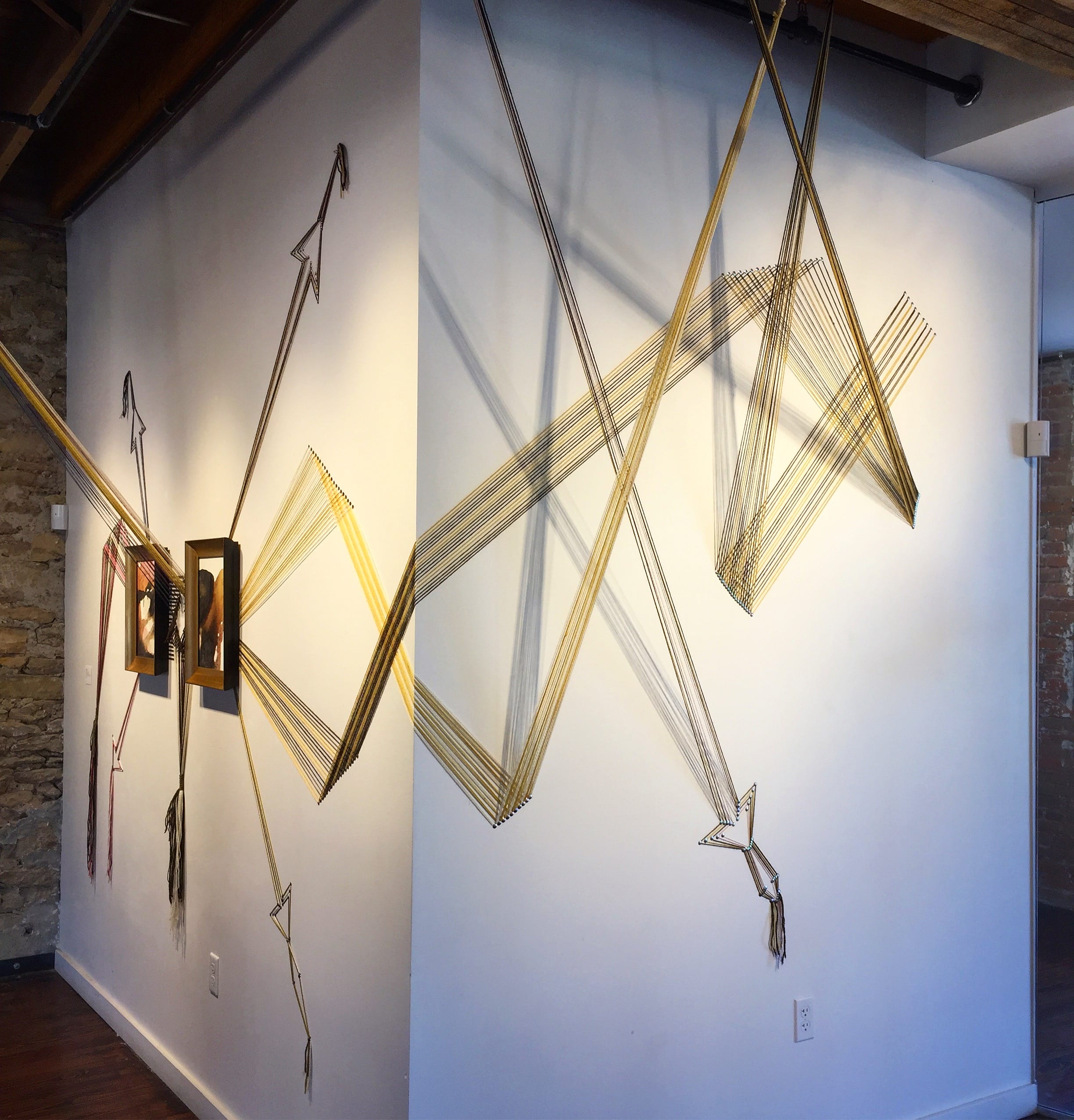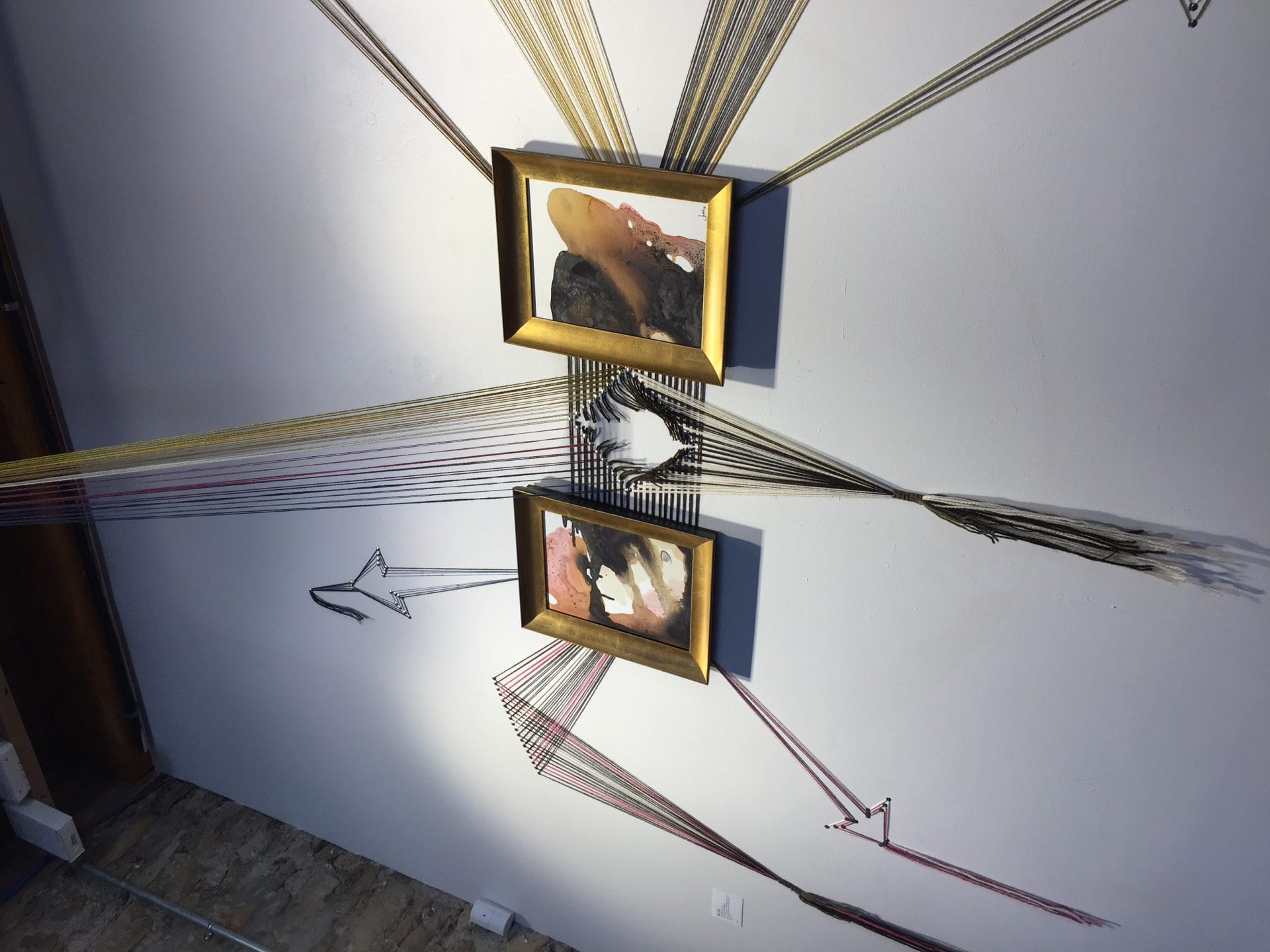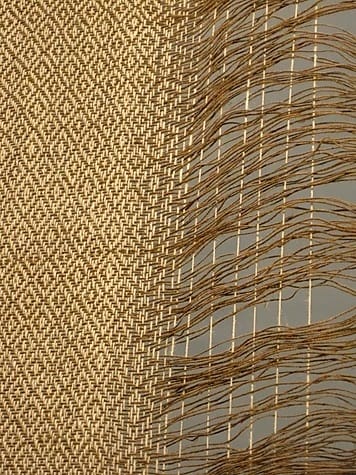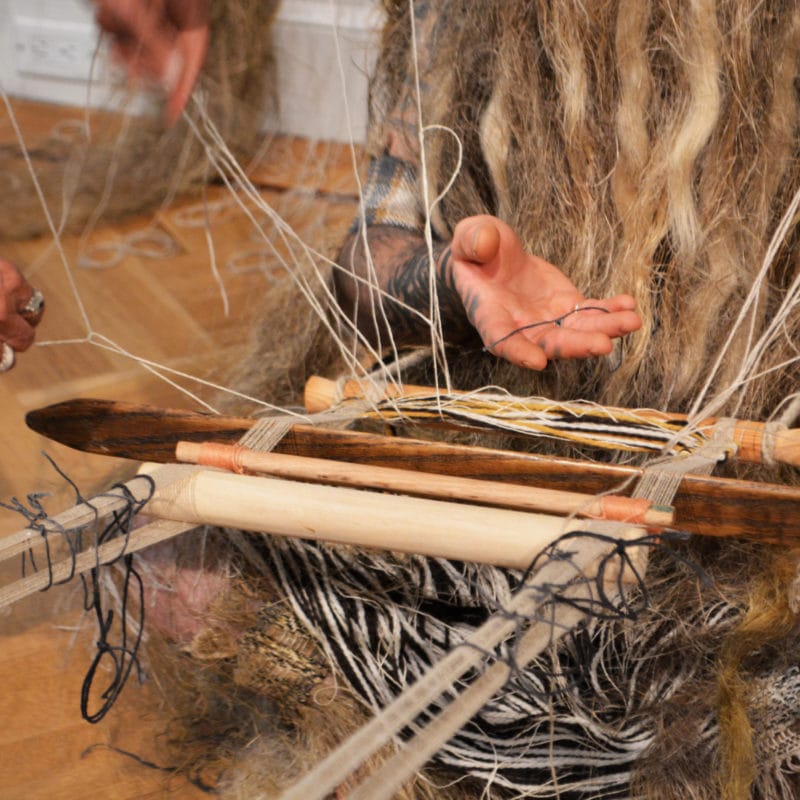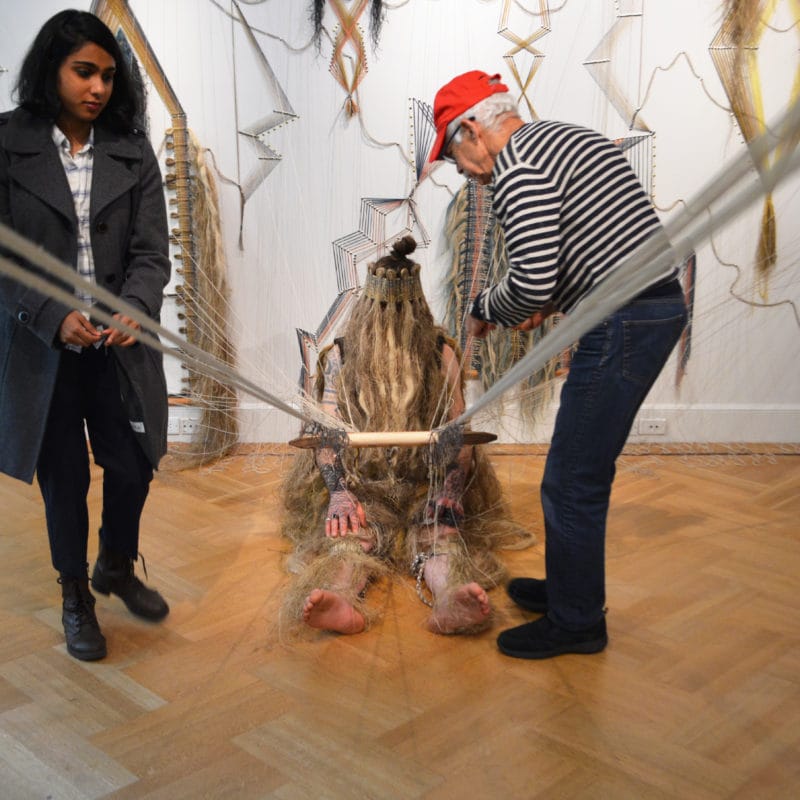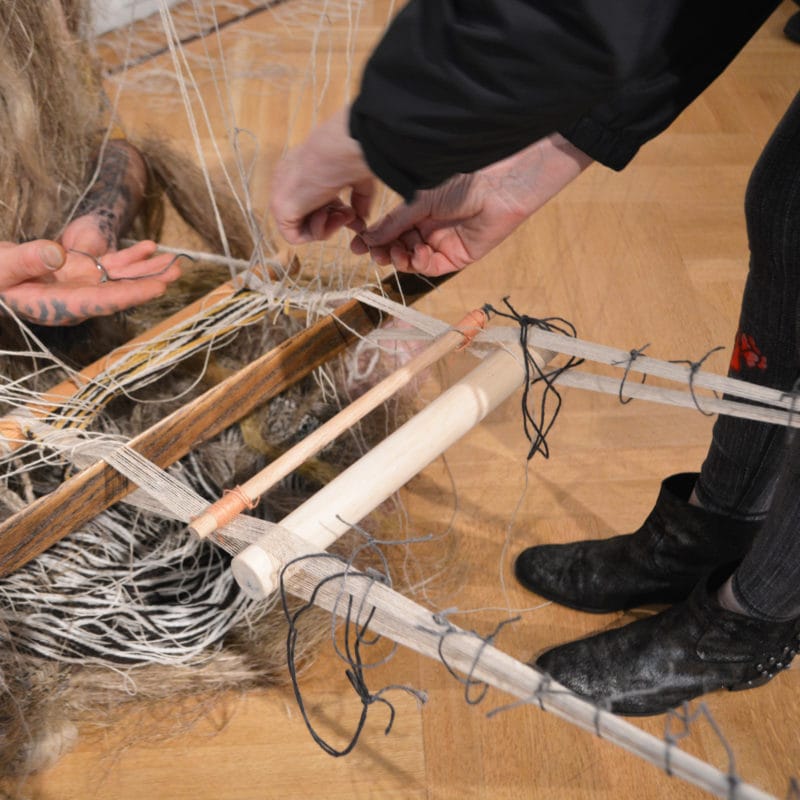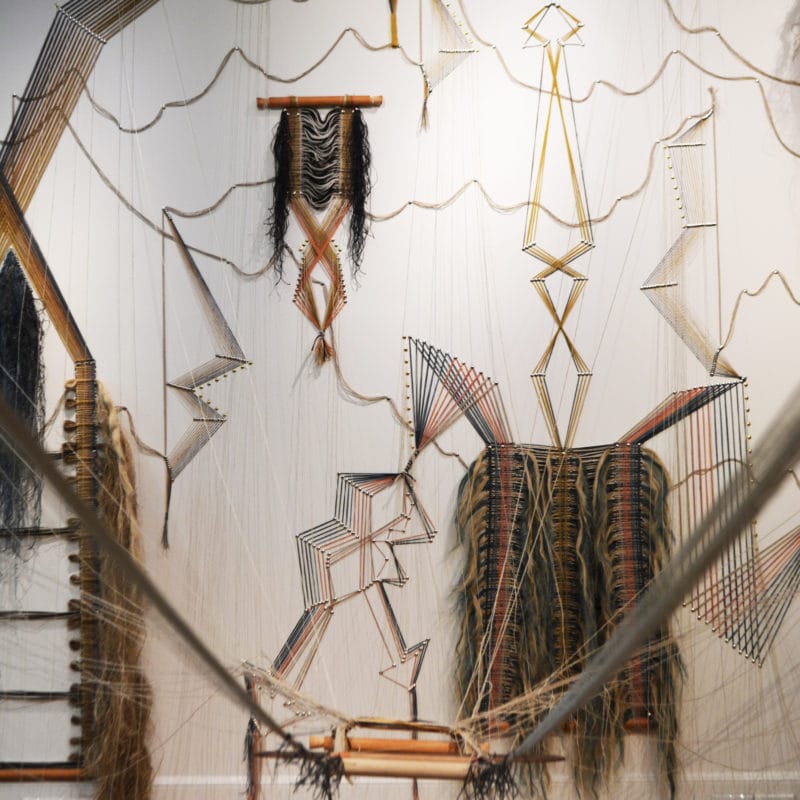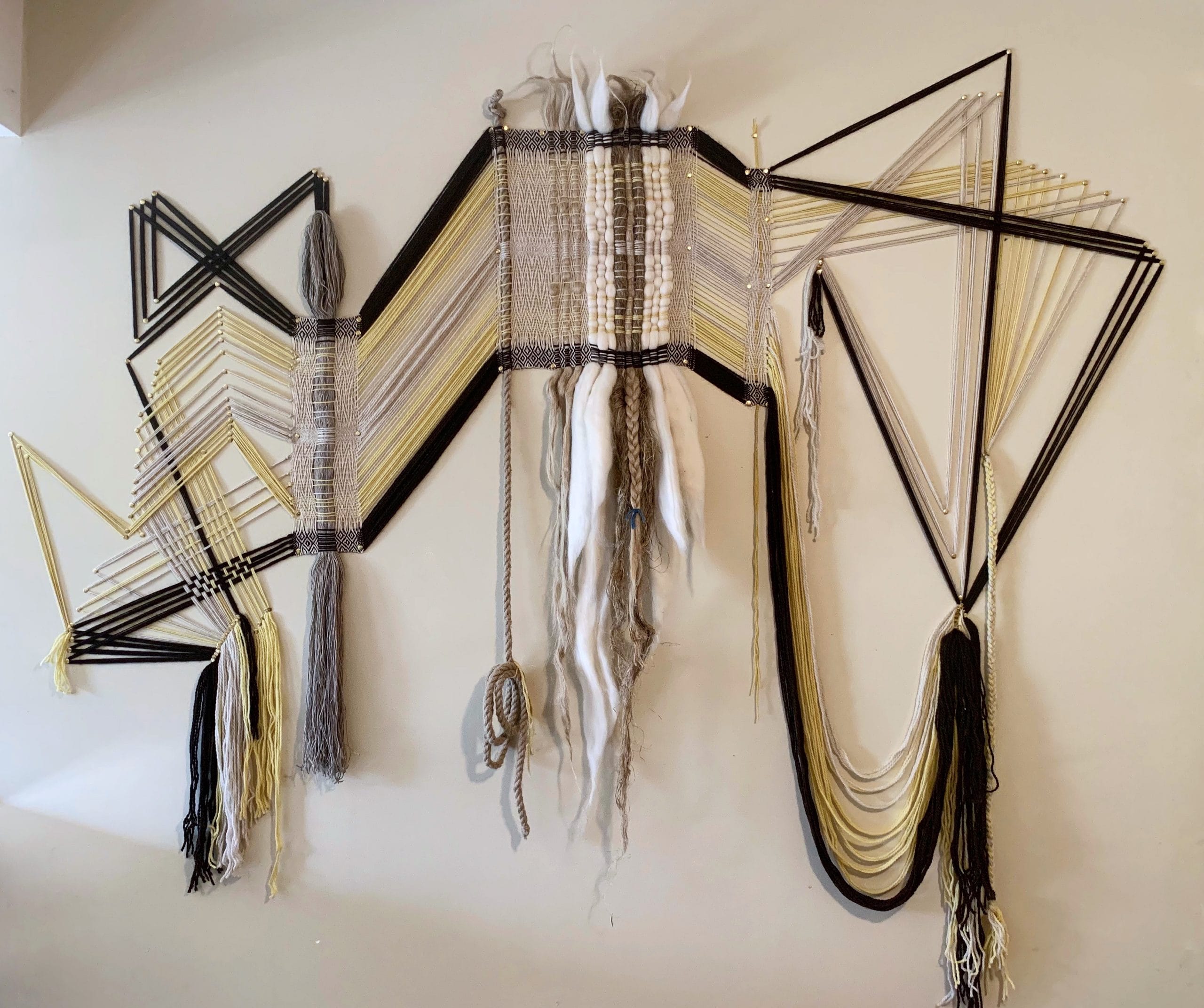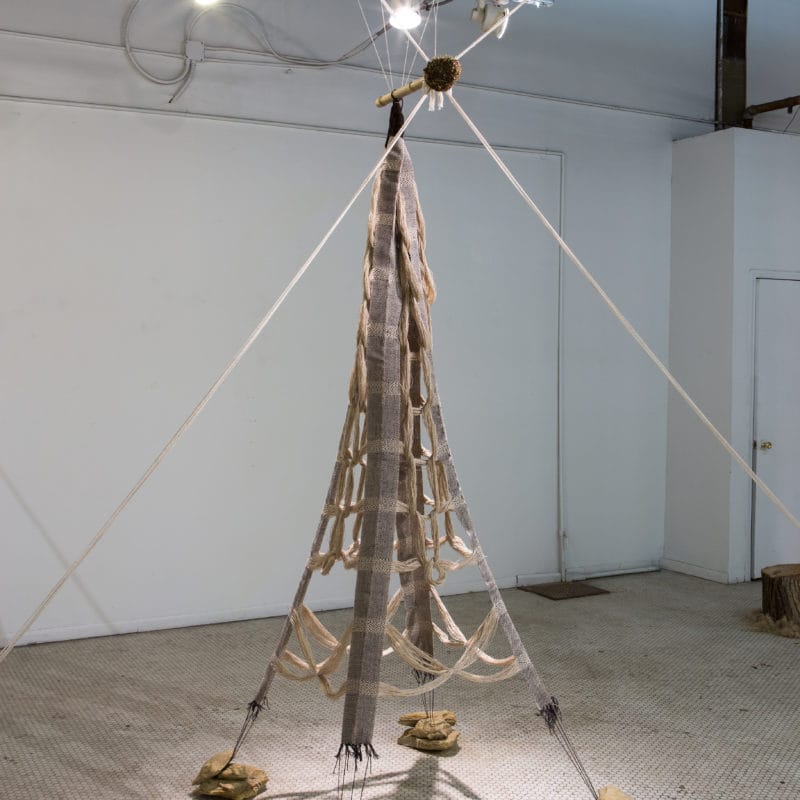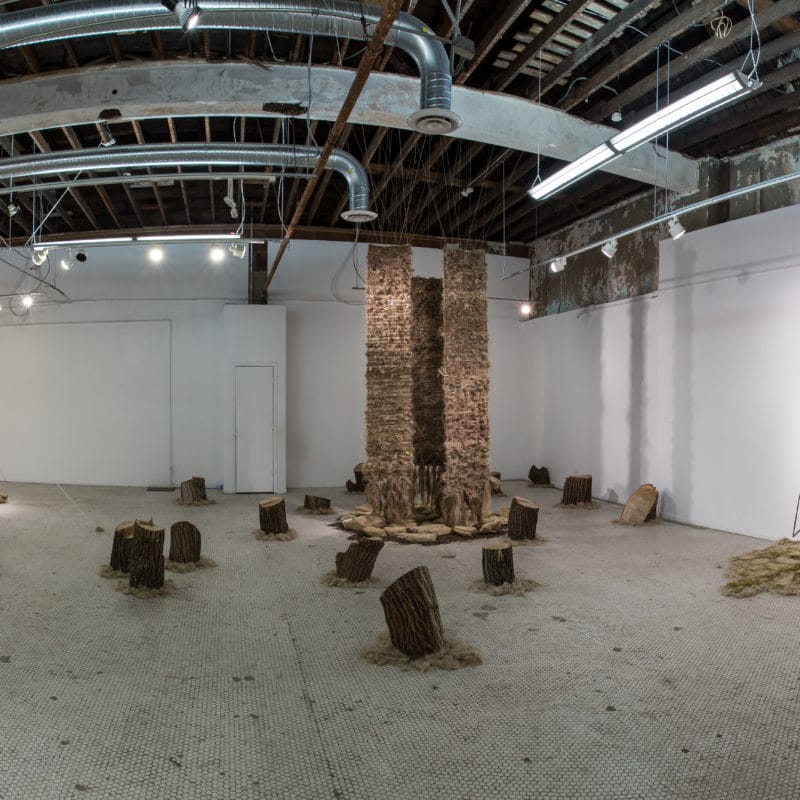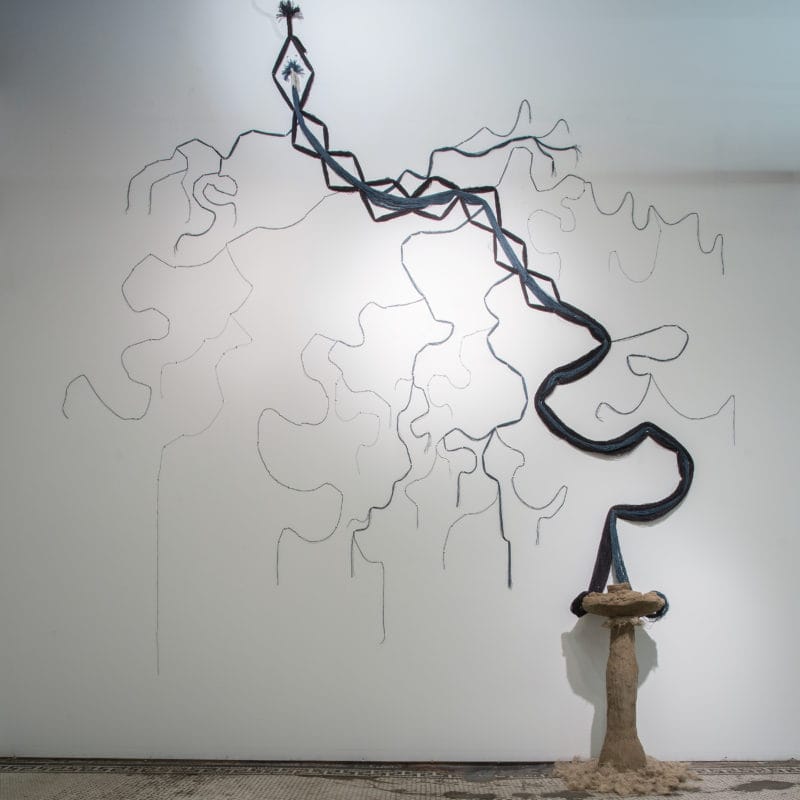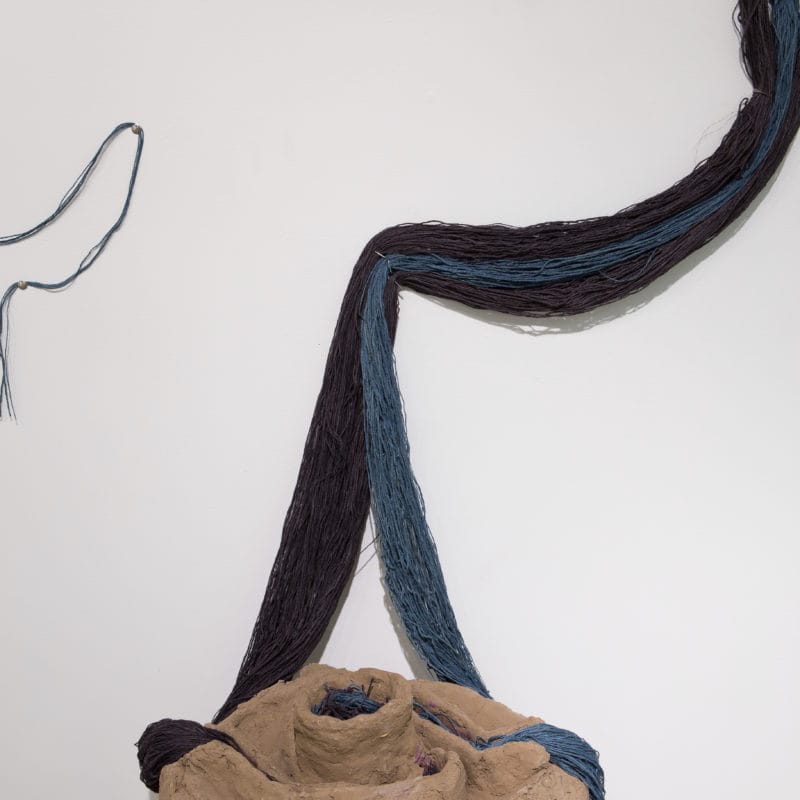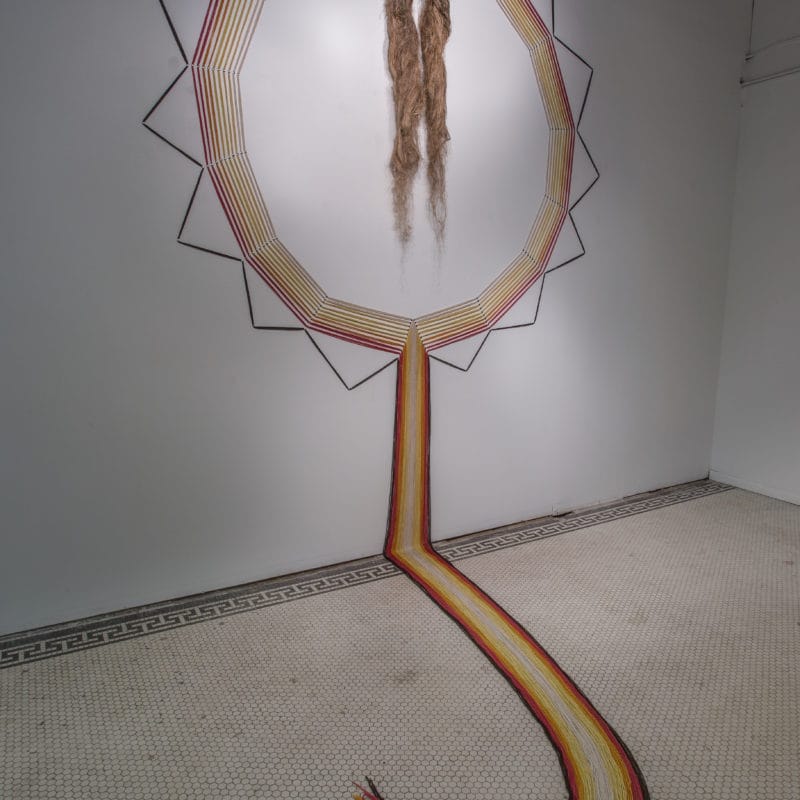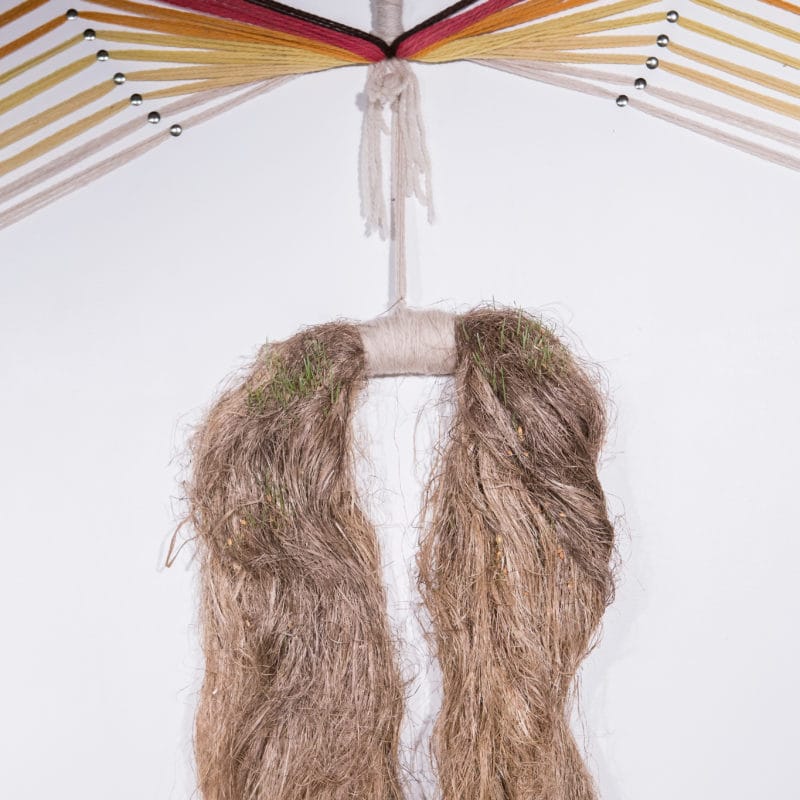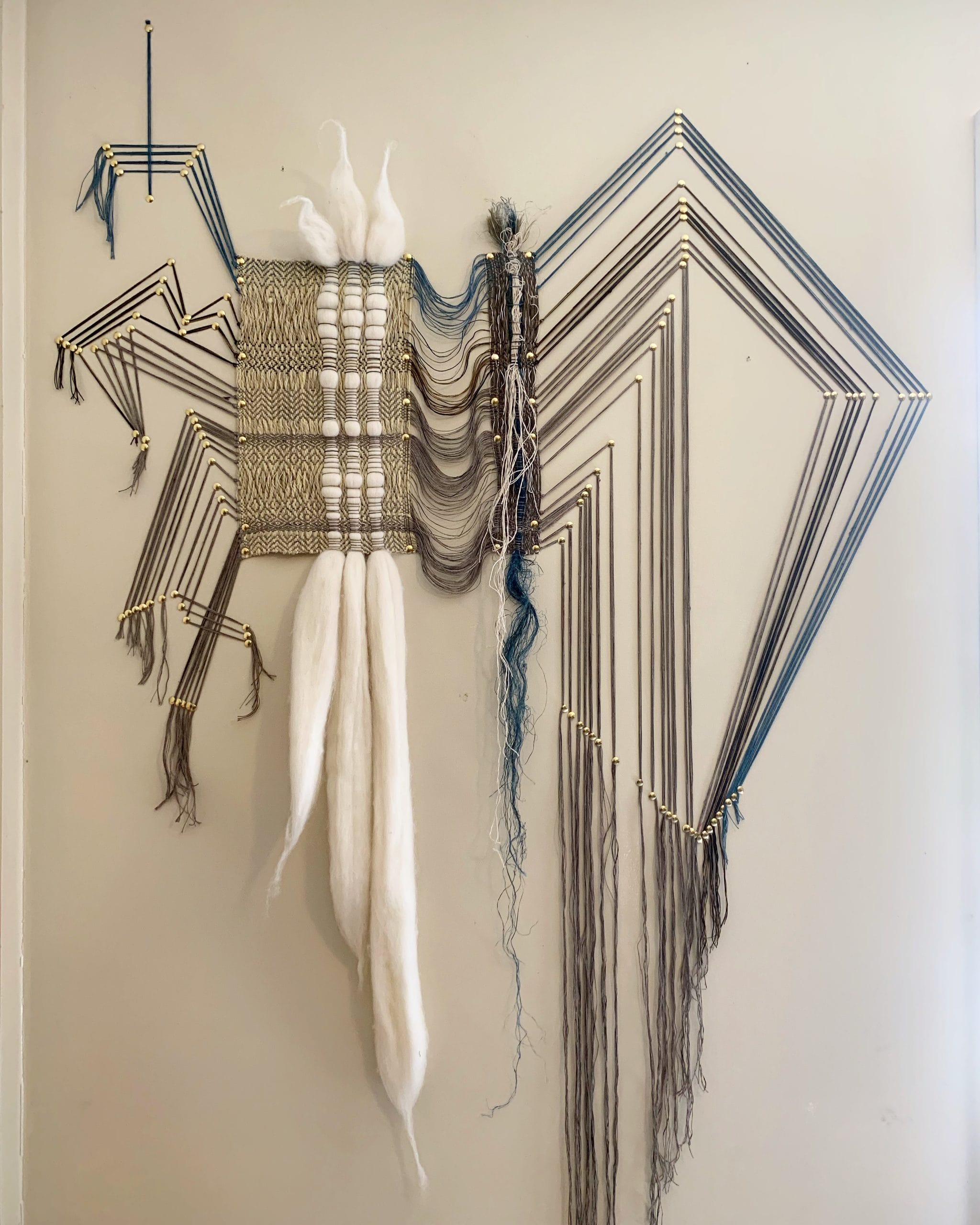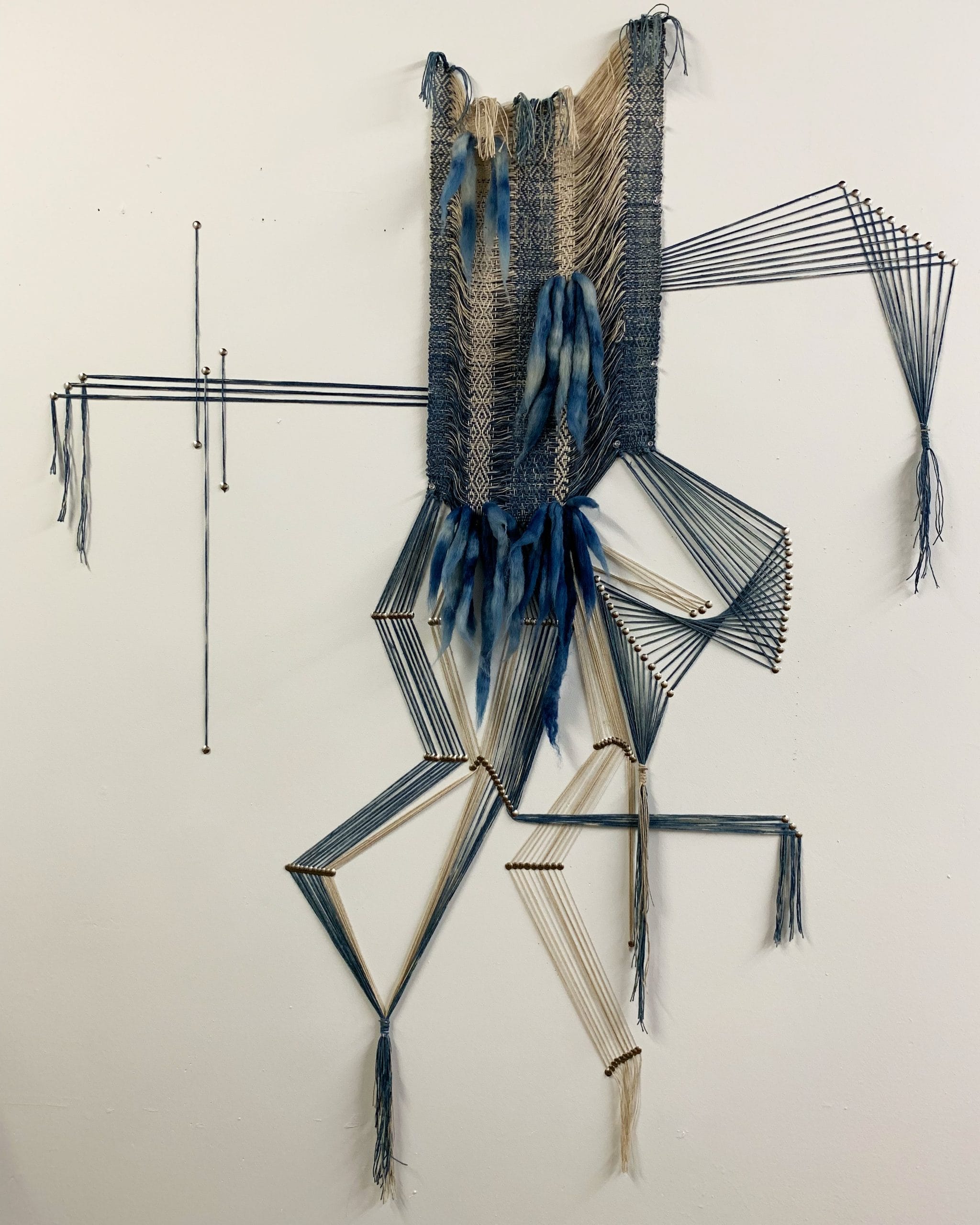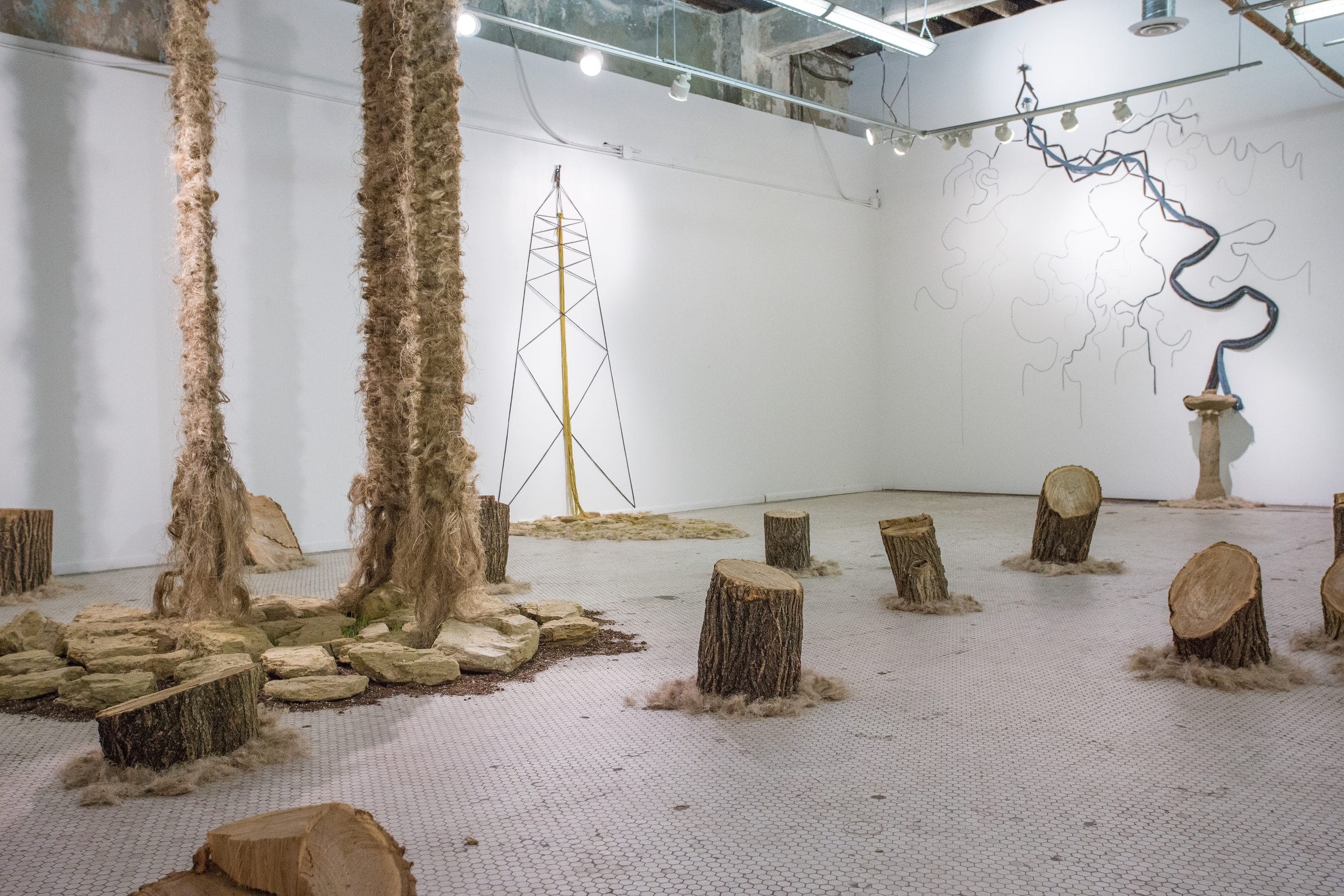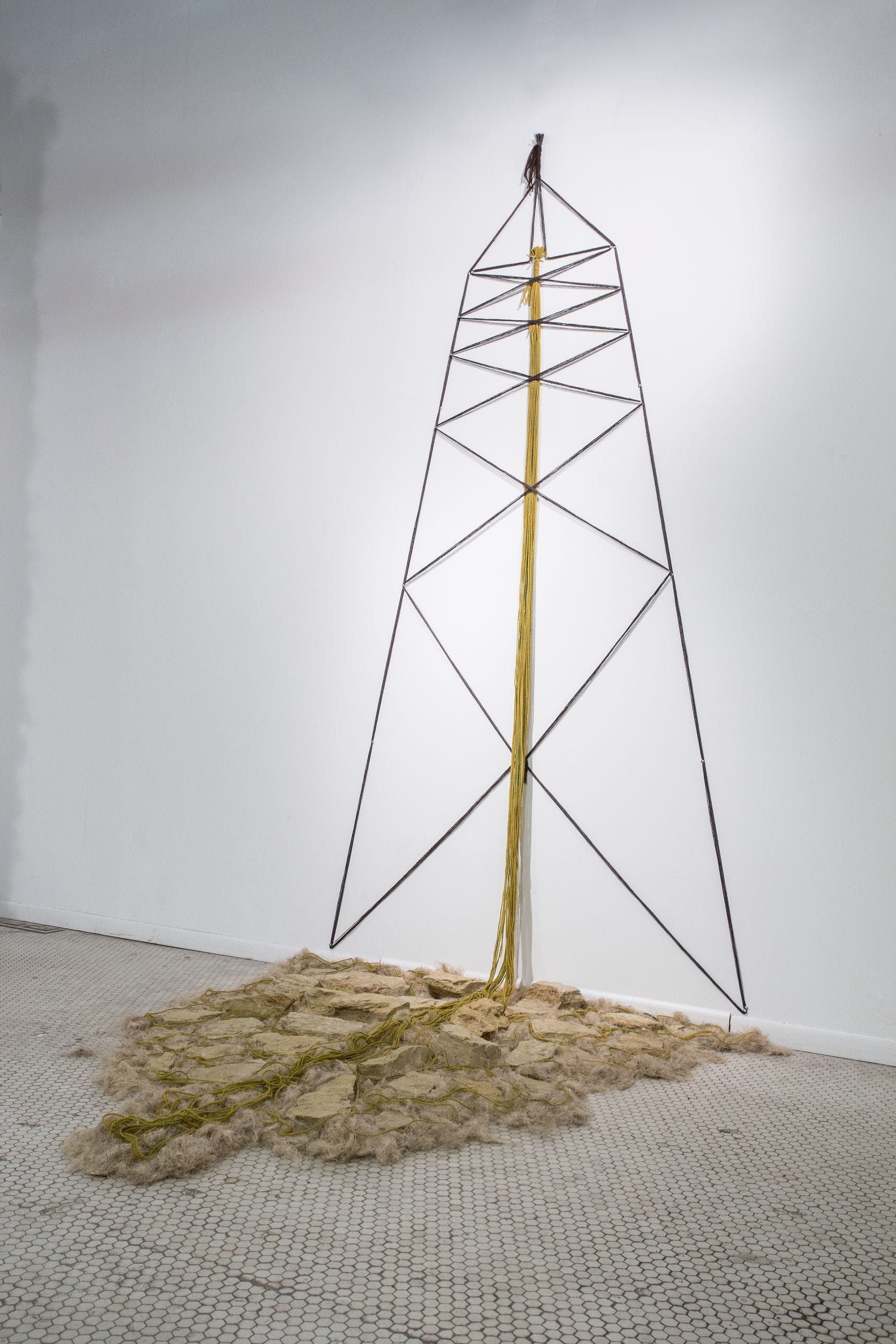“My work can be preserved, but it possesses a desire to be ephemeral”: interview with Neil Goss
Neil Goss lives and works in Asheville, NC,Usa. In 2012 he received two BFAs in Design (Textiles and Ceramics), from the University of Kansas SOTA and at present he is an educator and an estimated artist whose works are exhibited in many solo and group exhibitions.
“Live and dye naturally” is Neil’s signature. It is not only his trademark, but also his life philosophy. In fact, the artist bases his work on the research and practice of sustainable artistic processes such as natural dyeing, weaving, the use of materials from the Earth in a reciprocal relationship between man and the environment that strongly distances itself from that attitude of exploitation, domination and control typical of the contemporary production system.
“His works are made of hemp, wool, alpaca, foraged plants and clay. And although these materials have a global historical context, they are now seen as items of subversive action that result in installations, sculptures and performance”.
Below is the link to the artist’s website:
Neil Goss
Neil, why the choice to use weaving as a means of expression? Can you tell us about your history as an artist and how you started?
I started weaving while attending university. My first summer of studies, I took a Weaving 101 course with David Brackett and was immediately enthralled. I have OCD and the number sequences of threading the loom and treadling while weaving the patterns felt right for me. It had seemed that I found one of my core processes for art production.
My foundations for being an artist are in painting. Weaving taught me the process of creating one’s own canvas. Dyeing taught me the process of creating one’s own paint. Textiles taught me the foundations of art creation, instilled the care, awareness and sensitivity for materials and processes while imparting the ability to respect, understand and engage in every step of the “artistic” process.
My history as an artist started early in my life, much like all humans. I was blessed and fortunate to have parents that supported and encouraged the directions my passions went, keeping me from exiting a creative mindset. Throughout school, art was always my favorite course. Once in highschool, I took as many art classes as I could which resulted in most of my time being spent in the art room. I unexpectedly lost my father when I was 15. Art, skateboarding and substance were my main outlets for dealing with that personal loss and life altering event. It was then that I knew I would pursue a life in art.
I always had an adoration and curiosity about sewing, textiles, hair and fiber. I fondly remember the times my mom would get her Singer sewing machine out of its briefcase to alter or mend something. My grandma owned a clothing store for a decade of my youth that I spent so much time in after school and on weekends. Growing up, my trichotillomania was very extreme. At times, I had removed nearly all of my eyebrows and eyelashes while having large bald patches on my head. Around the same time as losing my dad, I began taking home-ec sewing classes. I focused on creating quilts and clothing. My passion for fiber and textiles grew every day of my existence. When I reflect on things, it makes perfect sense why I am where I am today doing what I do.
Your artistic practice, or rather, your entire life philosophy, I would say, is based on the principles of biocentrism, research and development of sustainable artistic processes.
In this period, almost everywhere we hear people say that nature is recovering its spaces. The pandemic forces us to remain closed in our homes, to stop our industrial activities, thus reducing, at least in part, the negative effects of man’s heavy action on the global environmental ecosystem. What do you think of all this?
Haha, well I would say that you did your research and have a beautifully concise way with words. You honestly nailed it in such a succinct way. The core principle of my existence is the belief in biocentrism as a way of living, creating and dying. That is to say, I view the world in a way that every living thing possesses inherent value equal to mine. All humans, animals, insects, plants, elements, and everything deserves and holds an equal level of worth.
I have been researching and developing sustainable artistic processes for over a decade now. It too is approached through a biocentric lense. Being a maker, I am inevitably a consumer. Once I consumed that truth, I wanted to embody materials and processes that were less toxic than those that are easily and readily accessible in this modern age. I believe that to move forward or progress, moving backwards tends to be a good direction.
I completely agree with you, there have been immaculate signs that Mother Earth has taken this time of global quarantine during COVID-19 to take some time and the opportunity to heal her age-old wounds. It’s been seen in air quality, plant and animal life and beyond. The inspiration in that is incredibly uplifting for me. I actually made a post about that one day not long ago and unfortunately enough the same day I saw an article about companies being allowed to break pollution laws during the coronavirus crisis. My thought process is this, we can never stop and never take a break. We must never settle and think that things are good enough. The essences of good, bad and neutral have been pervasive in the story of humankind. There is always darkness to battle, a corrupt individual to stand up against and a utopian world to fight for. Becoming complacent is how evil grows during a time of experiencing comfort in the personal bubble. I believe that when your personal bubble is filled with ease, contentment, and positivity, that is telling that it is time to fight hard for those who have no idea what those things feel like.
In the path you took to become a textile artist was there an event, a project or a person fundamental for your professional growth?
I have been so deeply impacted and motivated by so many events, projects and people on my path. There are too many to discuss them all in a short way. I am not very good at being concise but I will try to be brief. My high school home-ec sewing teacher, Patricia Klassen, was doing a segment on various fiber qualities such as absorption, tactility, flammability and more. When she burned the different fibers, I was impacted in a way that I didn’t understand until many years later. To see the unending fire on the polyester fabric and the almost instantaneous self-extinguishing flame on the wool fabric exposed me to the inherent magic of natural fibers. I would later learn so much more about these qualities that continued to inform my work. My personal discovery of weaving and natural dyeing were fundamental for my professional growth as well solidifying my direction as an artist and maker. It exposed me to the reality that Planet Earth was the best art supply store that I had encountered. It opened my eyes to the natural world around me. I began seeing the vegetation through new eyes, seeing endless value in items regarded as waste and while understanding the various sources of life that the environment readily possesses for living beings.
What are your sources of inspiration? How do you choose the subjects for your artwork? Are there artists or artistic currents that inspire you?
The human-earth nexus is my greatest inspiration for most of the work that I make. Other influences included current events, personal experience, contradictions, dichotomies, interconnectedness, mapping, the past, the present and the future. I think many artists are inspiring in what they believe, say, create or live. That being said, I don’t look to other artists for inspiration in my own creations but to be motivated to become a better artist and human myself. To name a few artists that I greatly respect include Gina Adams, Rena Detrixhe, El Anatsui, Andy Goldsworthy, Lenore Tawney, Cannupa Hanska Luger, and Tanya Aguiñiga.
Can you tell us about your works shown in the 2018 exhibition – Biocentric Interconnectedness?
The individual works in Biocentric Interconnectedness are not individually important. Rather, once they came together as a whole, that is what mattered. The exhibition was a culmination of a month and a half residency that I did at the Bard Graduate Center Gallery in Manhattan, NY. I was hosted there by the Textile Arts Center. Everything was made on site including the works on the wall, my outfit, the installation; everything was made in the month and a half. I individually made most of the weavings but some of them were also woven by visitors who came to the gallery. I invited visitors to experience the process of backstrap weaving and those interested participated in helping create the installation. This furthered the concept of interconnectedness.
Once I had finished the installation on the wall, the resolution of my residency was captured in a time-based participatory performance. I adorned my body in a hempen outfit that covered a large percentage of my skin but still allowed some to be seen. I was creating a being embodying a harmonious blend of human and Earth. The start of the performance was marked by me occupying a backstrap loom that was tied to the wall opposite the woven installation. The backstrap loom is an earthen creation initiated by humans that led to development for the species. It also maintained a human-Earth relationship, in fact deepening it. I sat in the backstrap loom for two hours. Visitors were invited to take yarn from the woven installation and tie it to the backstrap loom. As more individuals contributed, a complex web began to grow. This created a visual representation of the energy we inherently put into the world of interconnectedness every moment of every day. It can seem small and minute, the impact of our decisions and actions. But when we come together with a collective energy massive impact results. After sitting for two hours, countless strands of yarn were tied to the loom. I exited the loom, which without an inhabitant, falls lifeless to the ground. However, due to everyone’s collective offerings, the loom stayed in suspension, fabricating a visual of the interconnected effort. The hope was to create a space that metaphorically and literally presents a real world example of biocentric interconnectedness in a positive way. I am happy to say that it resulted in such a way.
What is your work Protection: Sacrifice about? How was it born and what is it inspired by?
This was the second piece that I made in a new direction. I went down about mapping, family history, and the mysteries of lineage through use of natural materials and forms combined with humanized geometric abstraction. I was talking with my grandparents one day and my grandma brought up one of our ancestors, Affadilla Deaver. Affadilla was a conductor on the underground railroad, assisting slaves to freedom in the north. I was so inspired by her decisions to assist humans pursue life and freedom while she risked her own in the process. That to me is the truest form of morality, beauty and selflessness. We need so much more of that in the world.
“Protection:Sacrifice”, copyright Neil Goss
Can you explain what you mean when you say, “My work can of course be preserved, but it possesses a desire to be ephemeral”?
At a point in my studies at university, when I was honing in on my materials and processes to be less toxic, I saw many of my classmates throwing projects in the trash after receiving their grade for class. It got me thinking more about what will happen to all this stuff I make as a creator and artist once I die or once it leaves my possession. Why did I and why do so many people want art to be permanent and live forever? I thought why should my art and therapeutic creations be beautiful pieces of toxic shit existing in the natural landscape long beyond my time or the time of the human species? The archival mindset of creation is one of ego. I opted to go down a path of using materials that are offered by the Earth and ones that I understand and replicate the process of birth, life and death.
I will explain an example of something that is inherently ephemeral but that can be preserved for long into the future. Years ago I was giving a talk at a natural dye garden that I started. I spoke about the native plants that I had planted for use and research. A visitor asked why I hadn’t planted pokeberry. I had two responses. One being that the plant is highly invasive and readily found all over the local landscape in Kansas. The second response being that pokeberries gives amazing color but that the result is a very fugitive and ephemeral colorant when exposed to light and washing. She said, “…but I’ve had some paper that I dyed over a decade ago and it still very saturated.” Funnily enough she had the paper in her car and brought it to show me after the talk. She was right, that paper was as saturated of a red/pink that you can attain from pokeberries. I asked where it was for the last 10 plus years and she said it was kept in a drawer. In that drawer, the piece never saw the light of day that damages color nor was it ever washed which further weakens colorfastness. The point here is that she gave something a lifespan up to 10 times longer than it should have had because of her care and preservation tactics. My work is created to die either in my lifetime or not long after that. However, if someone cares and loves something enough, they can make it last for generations to come. My main hope as an artist and human is that I inspire the Earth and humans enough that the stories about what I did or what I said live forever. My work does not need to live forever, that is not important. The impact or final result of an idea, intent, experience, story, or creation is what matters.
What do you think is the relationship between art and craft? How important are craft techniques to you and what role do they play in the creation of your work?
This is one of my favorite conversations to have. I am incredibly passionate about this dialogue. The relationship is one that has a root system as deep, complex and versatile as a perennial plant. I have seen amazing pieces of “art” that were simply nothing but “craft.” Similarly I have seen mind blowing pieces of “craft” that were simply nothing but “art.” For me there is a separation between art and craft. To not ramble for too long, again for me, it comes down to one thing. A concept. For something to be art, there has to be a concept. An idea, an intent or offering for social change that stimulates or provokes thought leading to an illumination of the interconnectedness that exists within this insane reality we are inherently living together while simultaneously existing in other realities.
Craft techniques have deep importance in work, concepts and intentions as an artist. Without them, I wouldn’t be the artist and human that I am today. Craft techniques are always used in the creation of my works and many times inform my concepts and intentions. I attempt to pay homage to the craft processes with all that I do.
What are you working on these days? Do you want to tell us about your current projects?
I’m all over the place these days much like other days. I work at a fiber mill, Echo View, in Weaverville, NC and am learning a lot about textile machinery and processing protein fibers. Working with the machines greatly influences a new direction and body of work when considering all the individual moving parts and how if one is off, the entire system suffers. Working at this mill has been very influential and I’m looking forward to what the future brings. I’m able to experiment with making my own yarns and am excited for this new endeavor.
I’m currently reinvestigating and focusing my intentions as an artist, craftsperson and maker. I’ve been working smaller than I ever have due to my current studio situation. This is allowing me to experiment more and prepare for some upcoming installations and show proposals. It’s been a rebuilding time for me after being in a crazy transition the past few years. I am in a mecca for the craft processes here in Asheville and it has been a very nice place to land and reignite a fire that never went out.




